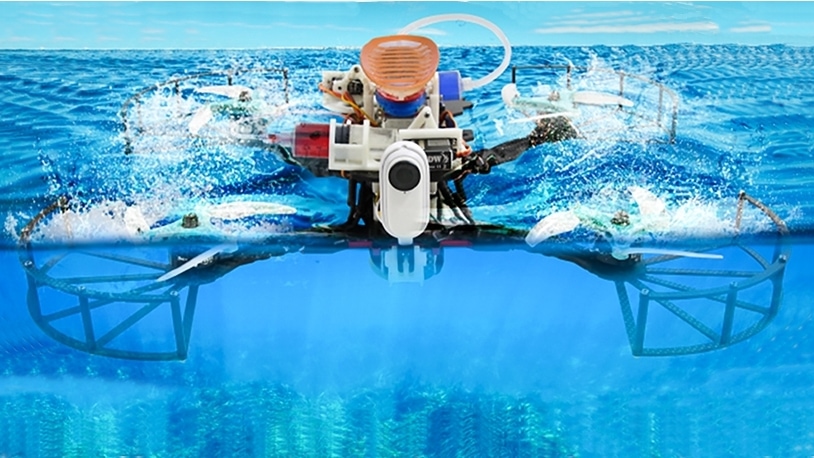Land drone transforms into underwater drone in a flash
A new robot is able to transform from an underwater drone to a flying drone in less than a second. The robot also has a suction disc inspired by the ship's keeper fish that allows it to attach itself to wet or dry moving objects to save significant amounts of energy.

The ultra-fast transition from underwater drone to aerial vehicle in less than a second is based on a new propeller design that allows faster switching between different media than most previous air-to-water robots. The versatile robot, developed by a team of scientists from China, the United Kingdom and Switzerland, could be used to observe ecosystems from the air and water with its biologically inspired adhesive disk.
The drone is designed for biological and ecological monitoring of marine ecosystems, for example to study pollution on the high seas, as the scientists from "Beihang University", "Imperial College London" and Empa explain in a new study published in "Science Robotics".
With the whale on the journey
"Free" drones - those without a connection to a base station - can be a tremendous help during research expeditions or environmental monitoring in vast or remote areas such as the open ocean, but there is still room for improvement. For example, unmanned drones are not the best choice for long-duration missions because they have no external power sources to fall back on if their battery fails.
To improve this, scientists have 3D printed a "dual" robot for operations in both air and water that can reduce its power consumption by "hitchhiking." The robot features a suction cup inspired by ship-holding fish, which can attach to marine animals such as whales and sharks using their adhesive discs. The adhesive disc of the remote-controlled robot can stick to wet and dry surfaces with different textures, even moving objects.
In various tests, the robot rode on a floating host vehicle to capture video footage of the seafloor, such as hermit crabs, scallops and seagrasses. "Our study shows how we took inspiration from the adhesion mechanism of ship-holding fish and combined it with aerial robotic systems to achieve novel mobility methods for robotics," said Mirko Kovac, who heads both Empa's Materials and Technology Center of Robotics and the Aerial Robotics Lab at Imperial College London.
In the process, the hitchhiking robot consumed almost 20 times less energy than if it were self-propelled. In their tests, the team was able to show that the robot can also hitchhike in the open ocean, take video even during the transition from air to water, and perform salvage operations in both fresh and salt water.
Source: Empa









